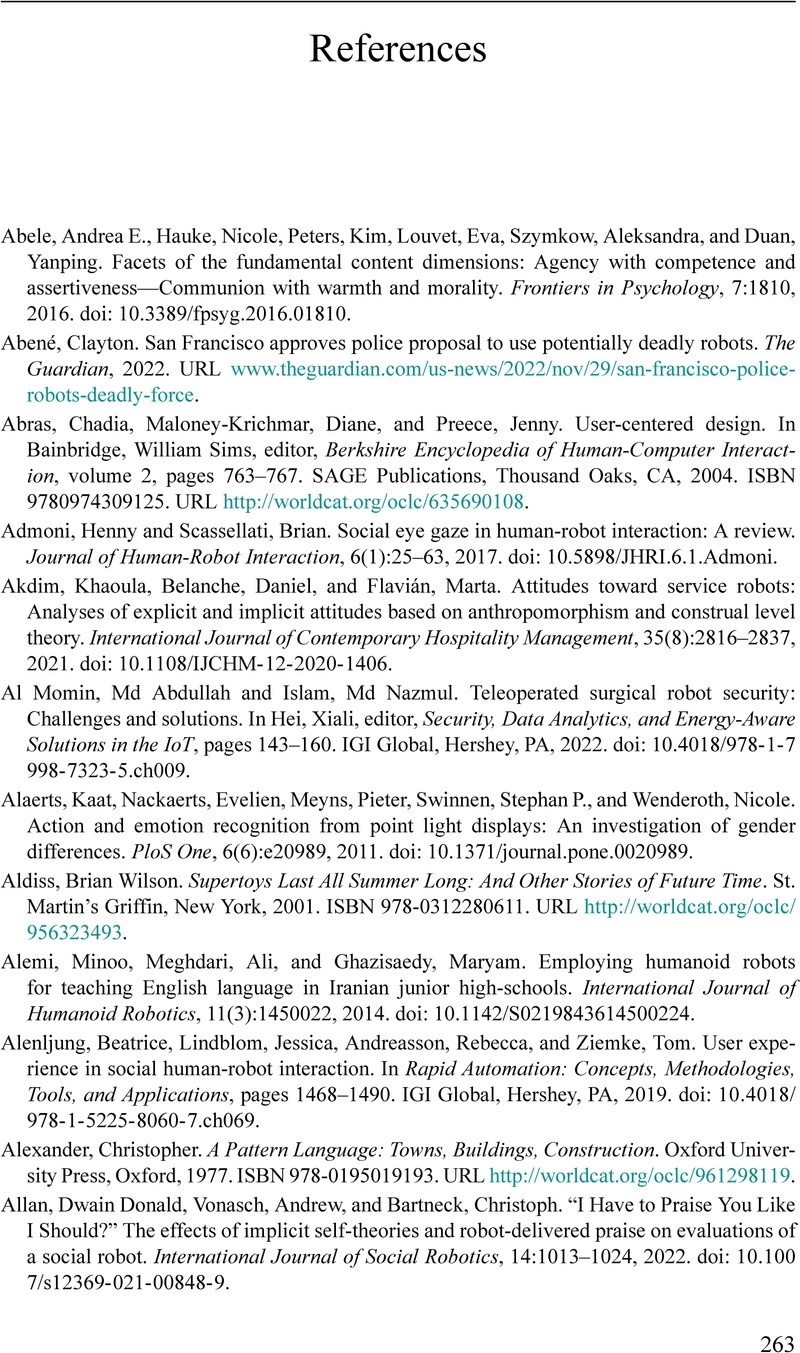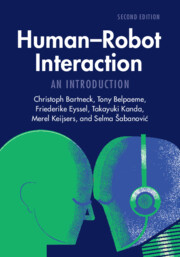Book contents
- Frontmatter
- Contents
- 1 Introduction
- 2 What Is Human–Robot Interaction?
- 3 How a Robot Works
- 4 Design
- 5 Spatial Interaction
- 6 Nonverbal Interaction
- 7 Verbal Interaction
- 8 How People Perceive Robots
- 9 Emotion
- 10 Research Methods
- 11 Applications
- 12 Robots in Society
- 13 The Future
- Appendix Answers
- References
- Index
- References
References
Published online by Cambridge University Press: aN Invalid Date NaN
- Frontmatter
- Contents
- 1 Introduction
- 2 What Is Human–Robot Interaction?
- 3 How a Robot Works
- 4 Design
- 5 Spatial Interaction
- 6 Nonverbal Interaction
- 7 Verbal Interaction
- 8 How People Perceive Robots
- 9 Emotion
- 10 Research Methods
- 11 Applications
- 12 Robots in Society
- 13 The Future
- Appendix Answers
- References
- Index
- References
Summary

- Type
- Chapter
- Information
- Human-Robot InteractionAn Introduction, pp. 263 - 309Publisher: Cambridge University PressPrint publication year: 2024



